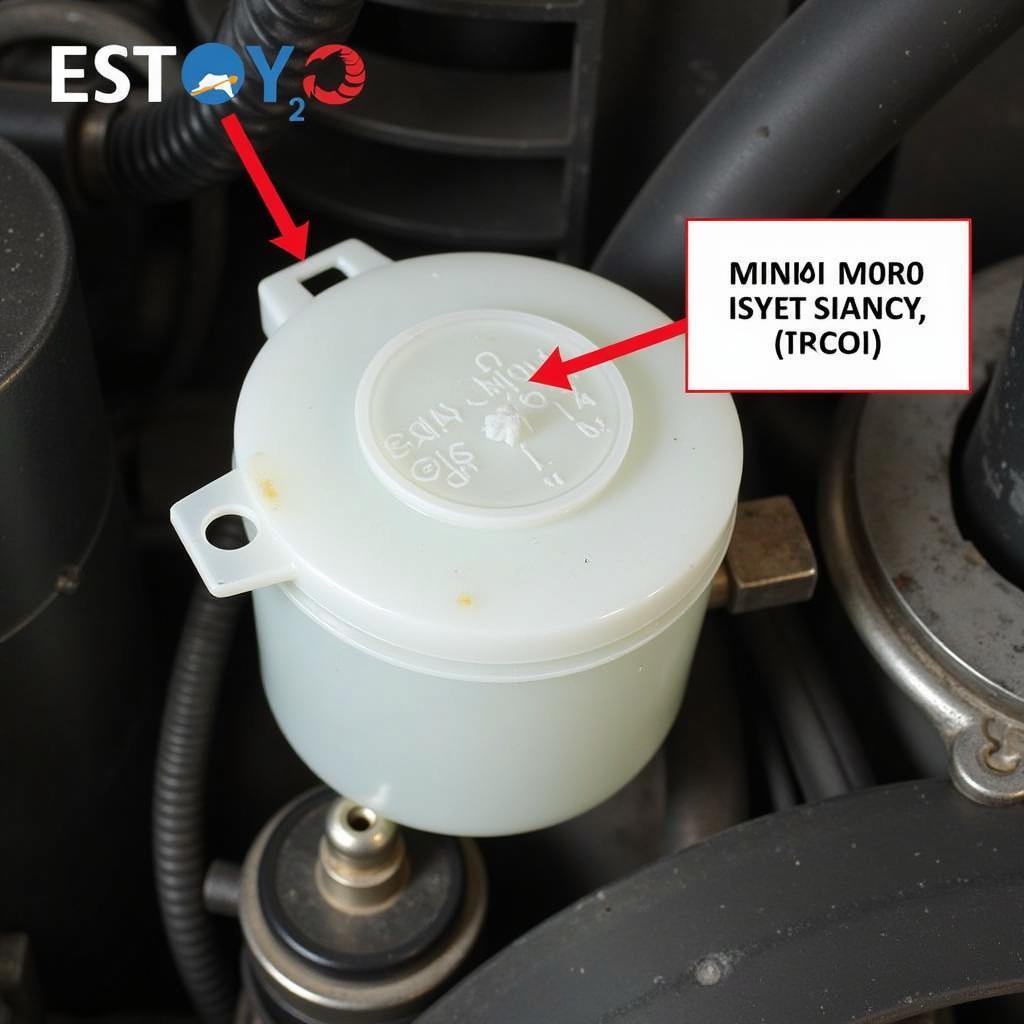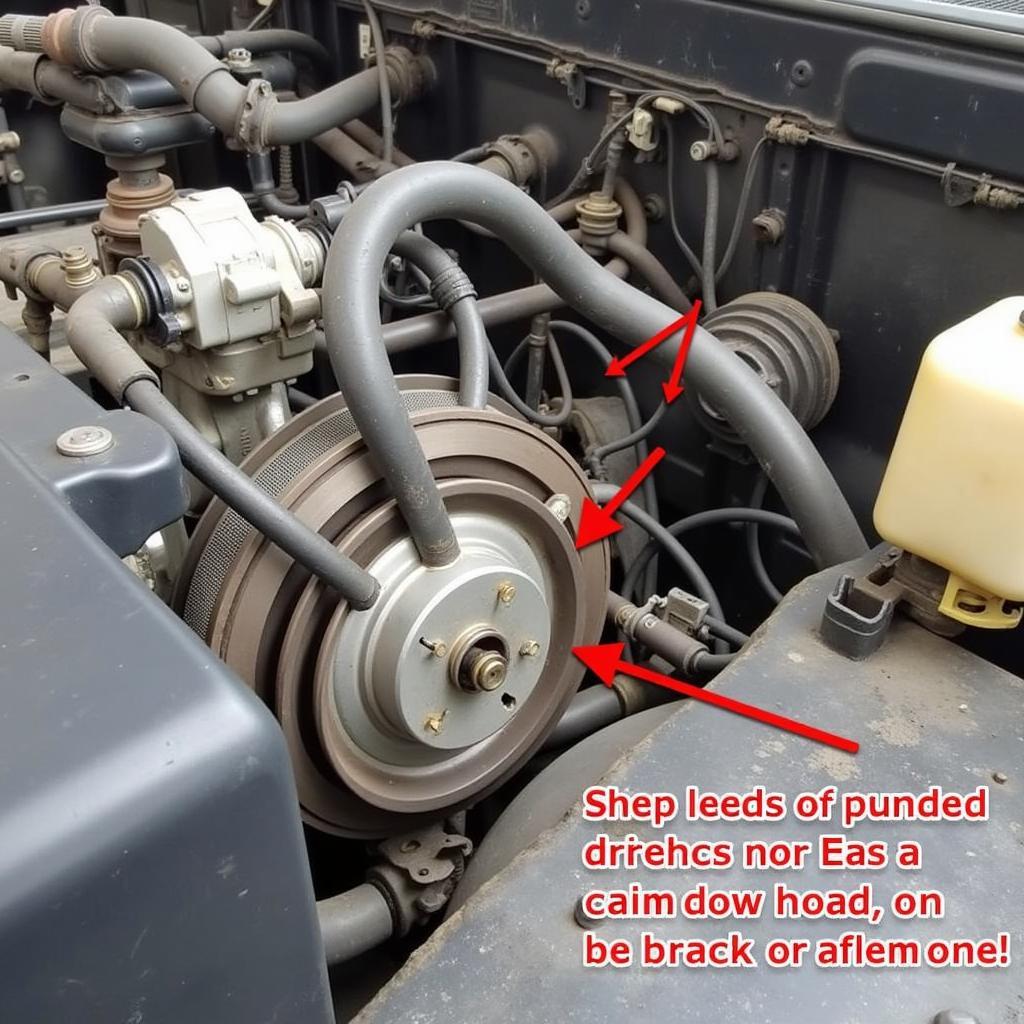The brake warning light on your 1990 Chevy truck is a crucial safety feature, designed to illuminate if there’s a problem with your braking system. Ignoring this light could lead to reduced braking performance and potentially dangerous situations. This comprehensive guide will walk you through common causes of a lit brake warning light on a 1990 Chevy, provide troubleshooting steps, and discuss possible solutions.
Understanding Your 1990 Chevy’s Brake Warning Light System
The brake warning light system in your 1990 Chevy truck utilizes sensors and a dashboard indicator to alert you of potential issues. When the ignition is turned on, the brake warning light should illuminate briefly as a bulb check. If it stays on or illuminates while driving, it signals a problem requiring immediate attention.
Common Causes of a Lit Brake Warning Light
There are several reasons why the brake warning light might engage on your 1990 Chevy. Here are some of the most common culprits:
- Low Brake Fluid Level: The most frequent cause is low brake fluid, often indicating worn brake pads or a leak in the system.
- Worn Brake Pads: As brake pads wear down, the brake calipers need to extend further to engage the rotors. This action draws more brake fluid from the reservoir, triggering the warning light.
- Brake Fluid Leak: A leak in the brake lines, hoses, calipers, or wheel cylinders can cause a drop in brake fluid level and activate the warning light.
- Faulty Brake Master Cylinder: The brake master cylinder pressurizes the braking system. If it malfunctions, it can lead to pressure loss and illuminate the warning light.
- Parking Brake Engaged: Leaving the parking brake partially or fully engaged can also trigger the brake warning light.
 Brake Fluid Reservoir
Brake Fluid Reservoir
Troubleshooting Your 1990 Chevy’s Brake Warning Light
Before taking your truck to a mechanic, you can perform some basic troubleshooting steps to identify the potential cause of the illuminated brake warning light:
- Check the Parking Brake: Ensure the parking brake is fully disengaged.
- Inspect Brake Fluid Level: Park your truck on a level surface and check the brake fluid level in the master cylinder reservoir. The reservoir is typically located on the driver’s side of the engine bay. The fluid level should be between the “MIN” and “MAX” markings.
- Visually Inspect for Leaks: Carefully examine the brake lines, hoses, and components near each wheel for signs of leaks, such as wet spots or fluid drips. Brake fluid is typically clear or slightly yellowish but can darken over time.
Important: If you suspect a brake fluid leak, avoid driving your truck and consult a qualified mechanic immediately.
 Brake Line Inspection
Brake Line Inspection
Potential Solutions and Repairs
The solution to your 1990 Chevy’s brake warning light problem will depend on the underlying cause.
- Low Brake Fluid: If the brake fluid level is low but you don’t find leaks, adding the correct type of brake fluid to the reservoir might temporarily resolve the issue. However, this is often a sign of worn brake pads that require replacement.
- Worn Brake Pads: Worn brake pads require immediate attention. Have a mechanic inspect and replace them to restore optimal braking performance.
- Brake Fluid Leaks: Repairing brake fluid leaks involves identifying and replacing the damaged component, such as a brake line, hose, caliper, or wheel cylinder. This repair requires specialized tools and expertise.
- Faulty Brake Master Cylinder: A malfunctioning brake master cylinder usually requires replacement.
A Word of Caution: Attempting to repair brake system components yourself can be dangerous if you lack the necessary knowledge and experience. Improper repairs can compromise your truck’s braking ability, putting you and others at risk.
Conclusion
Addressing a lit brake warning light promptly is crucial for maintaining the safety and reliability of your 1990 Chevy truck. By understanding the common causes, conducting basic troubleshooting, and seeking professional assistance when needed, you can ensure your braking system remains in optimal condition for worry-free driving. Remember, never compromise on safety when it comes to your brakes.
